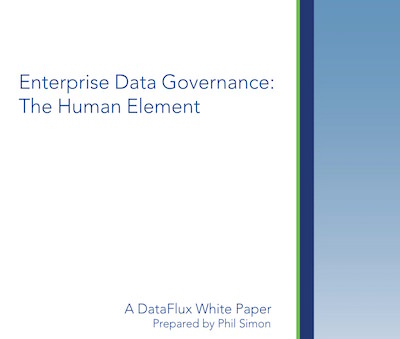WRITING
Apart from my own creations, I have penned more than 2,000 blog posts, articles, and white papers for my clients over the years on a wide variety of topics.
The Problem
The Web is replete with poorly written copy.
As I write in Message Not Received, employees today are busier than ever—a trend that shows no signs of abating. Very few have time to stay on top of current business and technology trends, much less write compelling, cogent, and professional content that other people actually want to you, you know, read.
It’s fair to say that today the Web is replete with:
- Poorly written copy
- Zombie blogs without posts in six months
- Lazy and incomplete listicles
- Downright awful case studies. (Click here to learn why most of these suck.)
- Sales pitches thinly veiled as blog posts
Self-aggrandizing and patently obvious “content” rarely if ever drives meaningful conversations, legitimate inquiries, and, ultimately, and sales. There’s a reason that content marketing has become de rigueur.
Think about it: Do you watch commercials or try to ignore them?
The Solution: Professional Writing
I write white papers, blog posts, executive reports, case studies, and articles on many topics for a wide array of organizations. For my clients, this typically falls under the umbrella of content marketing. My objective is to start meaningful conversations around the very problems that my clients’ products and services address.
Whatever their form, the work ultimately resides on one of three places:
- On my site as sponsored posts
- On my clients’ websites as freely downloadable content
- Behind paywalls
The vast majority of this content is attributed to me. Occasionally, however, I ghostwrite.
Click here for an FAQ on my writing services.
Praise
“Through his writing, Phil routinely demonstrates his profound understanding of today’s business reader.”
—Andreas Rindler, Partner, BearingPoint
Phil is a prolific writer whom I can always count on to create insightful, easy-to-read content. Through his sharp, witty style, phil draws in readers with every article he writes. A great storyteller, he engages many different types of readers and keeps them coming back for more.”
—Cindy Turner, Marketing Communications Specialist, SAS
White Papers
Here’s a sample of long-form content that I have written for my clients.
The Rise of Employee Self-Service, Big Data, and IT’s New Role
Systems Breakdown Case Study: A Square Peg and a Round Hole
The Appleization of the Enterprise: Understanding IT’s New World
Enterprise Data Governance: The Human Element
Do you watch commercials or try to ignore them?
Blog Posts and Articles
Aside from the pieces for HuffPo, Harvard Business Review, and others, here are some of the regular columns I scribe for my clients. All told, by my estimation, my posts have generated about 4 million page views.
To view the pieces that I’ve written for my clients, click on the different images below.
Philosophy
Core tenets on how I approach the craft of writing.
Generative AI
I don’t use ChatGPT and its ilk to write content. Here is why.
Purpose
Writing should raise the level of discourse. That’s not to say that all books need to be about the meaning of life. Rather, each book, white paper, and blog post should communicate something important.
Jargon
I despise it. Period. If you’re looking for someone to confuse readers, then I’m not your guy.
Active Voice
I also despise the passive voice. I never want to fail the zombie test.
Readability
Dense language and excessively long sentences and paragraphs only alienate readers. They effectively ensure that few people read your content, never mind understand it. It’s imperative to keep in mind that you’re never writing for yourself; you’re writing for others.
Data and Research
I’m not a fan of unsubstantiated, grandiose claims.
That’s not to say that I don’t hold strong opinions. I certainly do, but I want to back as many of them up with credible statistics and research as possible. To quote a great Rush song, “Show me don’t tell me.”
Storytelling
Plenty of people question the science behind Malcolm Gladwell’s works. Count me among them. Still, no one can dispute that he’s a gifted storyteller. I’m nowhere near the writer that he is, but I try to integrate stories and proper case studies into my writing.
Humor and Humility
I’m no Gary Gulman, but I do try to pepper my writing with humor and humility. Put different, I take what I do seriously but I don’t take myself all that seriously.
Current Events
I stay on top of current events. I try to tie contemporary and future trends into my writing.
Integrating Different Ideas
I consider my writing interdisciplinary. Among the best books I’ve read is Range: Why Generalists Triumph in a Specialized World by David Epstein.
Looking Outward for Inspiration
I’m constantly reading. (Yeah, I’m a sponge.) I’m always absorbing writing tips through books, podcasts, articles, and blog posts. As a result, I like to think I improve my skills with each book.
Collaboration and Tools
I enjoy using tools such as Slack, Zoom, Google Docs, and more. (Yeah, I wrote books on some of these subjects, so I’m biased.) If your idea of collaboration means sending hundreds of e-mail attachments back and forth, then we shouldn’t work together.
Read First
The great playwright George Bernard Shaw once famously said, “The single biggest problem in communication is the illusion that it has taken place.”
Good point.
Before we connect, it’s important to determine if we are a good fit. To that end, please read this short page. I’d also recommend checking out my rates.

 PHIL SIMON
PHIL SIMON























